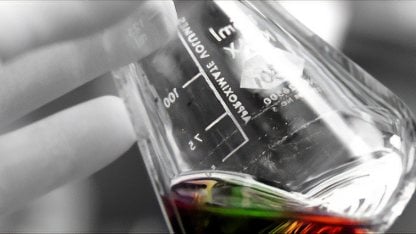Physico-Chemical Property Testing Services for REACH submissions to complete a Safety Data Sheet (SDS) to meet requirements of Regulation (EC) No 440/2008
Physico-chemical property testing for REACH Registration, forms an integral part of the REACH standard information requirements and also for the registration of chemical substances in non-EU countries.
REACH Council Regulation (EC) No 440/2008 describes the physicochemical tests that you, as a registrant need to include in order to complete Safety Data Sheets (SDS). Physicochemical data can be vital in designing the appropriate toxicological and ecotoxicological test packages and help predict toxicological or environmental hazards and behavior. The data can also have an impact on assessment of risk to human health and the environment during the product’s lifecycle, risk management and safety handling purposes.
Our physicochemical testing capabilities are delivered in either packages or as stand-alone tests, to assess environmental impact or the safety of the chemical substance utilizing the physico-chem test methods listed in the REACH Council Regulation (EC) No 440/2008 (pursuant to Regulation (EC) No 1907/2006).
We provide test data for physicochemical properties including melting temperature (A.1), boiling point (A.2), relative density (A.3), vapour pressure (A.4), surface tension (A.5), water solubility (A.6) and partition coefficient (A.8). We have particular expertise in the Phys-chemical testing requirements for polymers (A.18, A.19, A.20). Additionally, further phys-chem tests are available including granulometry, if required.
Our REACH and Regulatory testing analytical programs include substance ID, structural identity, purity, impurity profiles which are important when planning testing and can be used to quantify the phys-chem tests. We also provide sameness testing.
Beyond REACH, we have supplied physico-chemical data for our clients’ regulatory requirements for Classification, Labelling and Packaging (CLP) Regulation (EU) No 528/2012 (the EU Biocides Regulation), and agrichemicals working to OECD, CIPAC and EPA Test methods as appropriate.
- A.1. Melting Temperature/Freezing Temperature – OECD 102
- A.2. Boiling Temperature – OECD 103
- A.3. Relative Density – OECD 109
- A.4. Vapour Pressure – OECD 104
- A.5. Surface Tension – OECD 115
- A.6. Water Solubility – OECD 105
- A.8. Partition Coefficient (HPLC) – OECD 117
- A.8. Partition Coefficient (Shake Flask) – OECD 107
- A.9. Flash point (Liquid only)
- A.10. Flammability (Solid on ignition)
- A.12. Flammability (Contact with Water)
- A.13. Pyrophoric Properties of Solids and Liquids
- A.14. Explosive Properties (Liquid)
- A.14. Explosive Properties (Solid)
- A.15. Auto-ignition Temperature (Liquid)
- A.16. Relative Self-ignition Temperature (Solid)
- A.17. Oxidising Properties (Solid)
- A.21. Oxidising Properties (Liquid)
- A.18. Number – Average Molecular Weight and Molecular Weight Distribution of Polymers
- A.19. Low Molecular Weight Contact of Polymers
- A.20. Solution / Extraction Behavior of Polymers in Water
- Granulometry
- Stability in organic solvent
- Solubility in organic solvents
- Dissociation Constant – OECD 112
- Viscosity
- pH
- LogD (octanol: water distribution coefficient)
- Viscosity – OECD 114
- Hydrolysis as a function of pH
- Conductivity
- Refractive Index
- Optical Rotation
- Corrosion studies (ASTM)
- Particle size and sieve test
- Crystallinity and Morphology
- Stability to metals and metal ions
- NIER testing of polymers
- Wettability
- Persistent foaming
- Flowability, Pourability, Dustability
- Bulk resistivity
- Storage stability
- Thermal stability

Regulatory Testing for REACH

